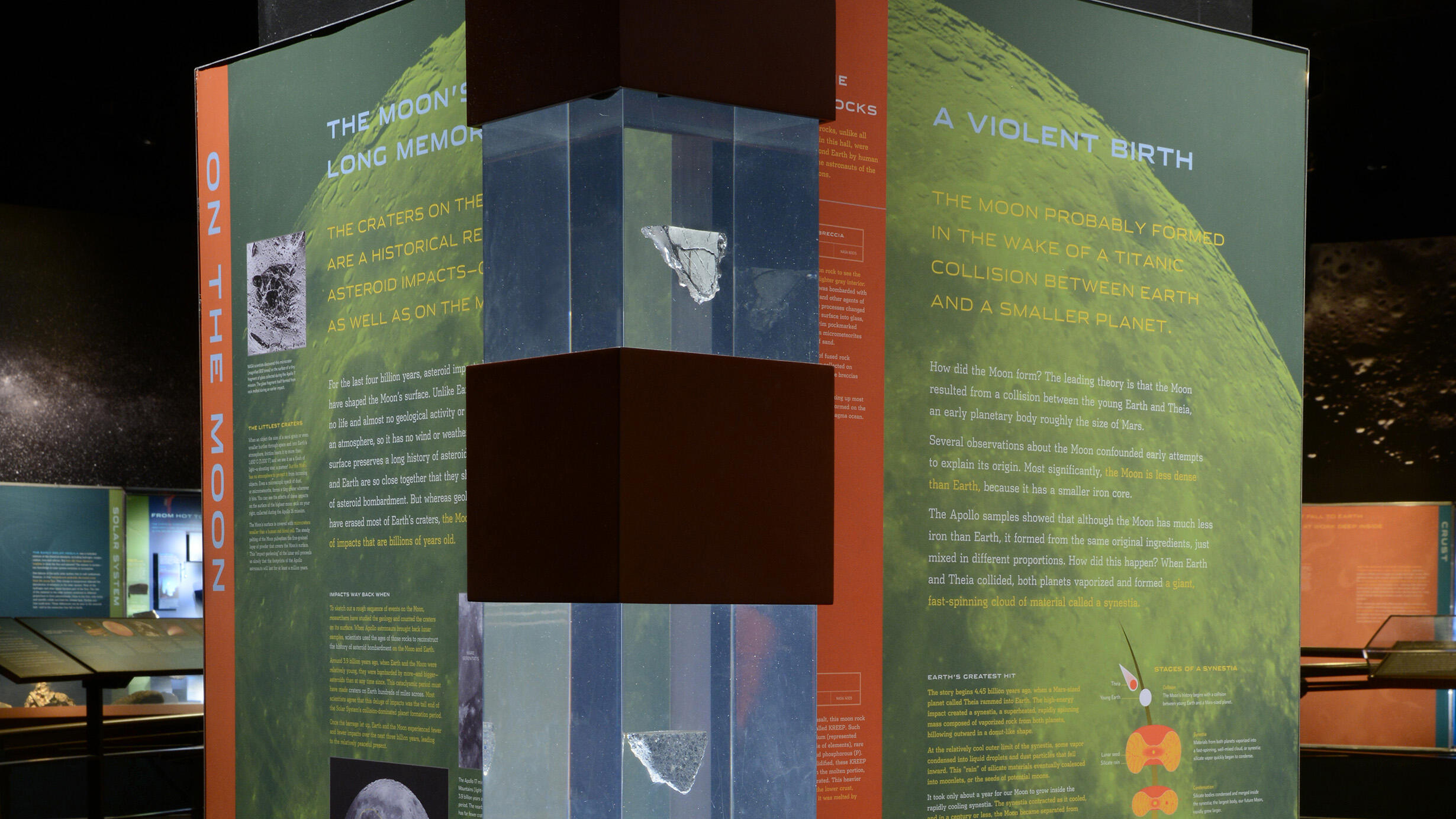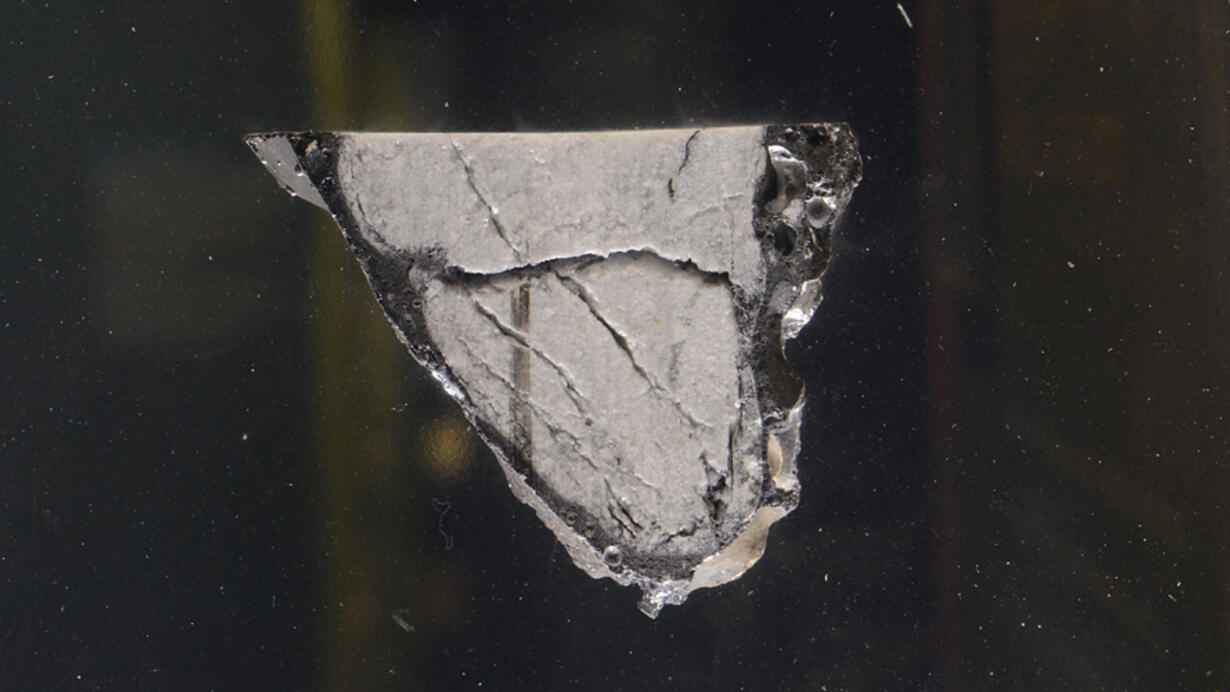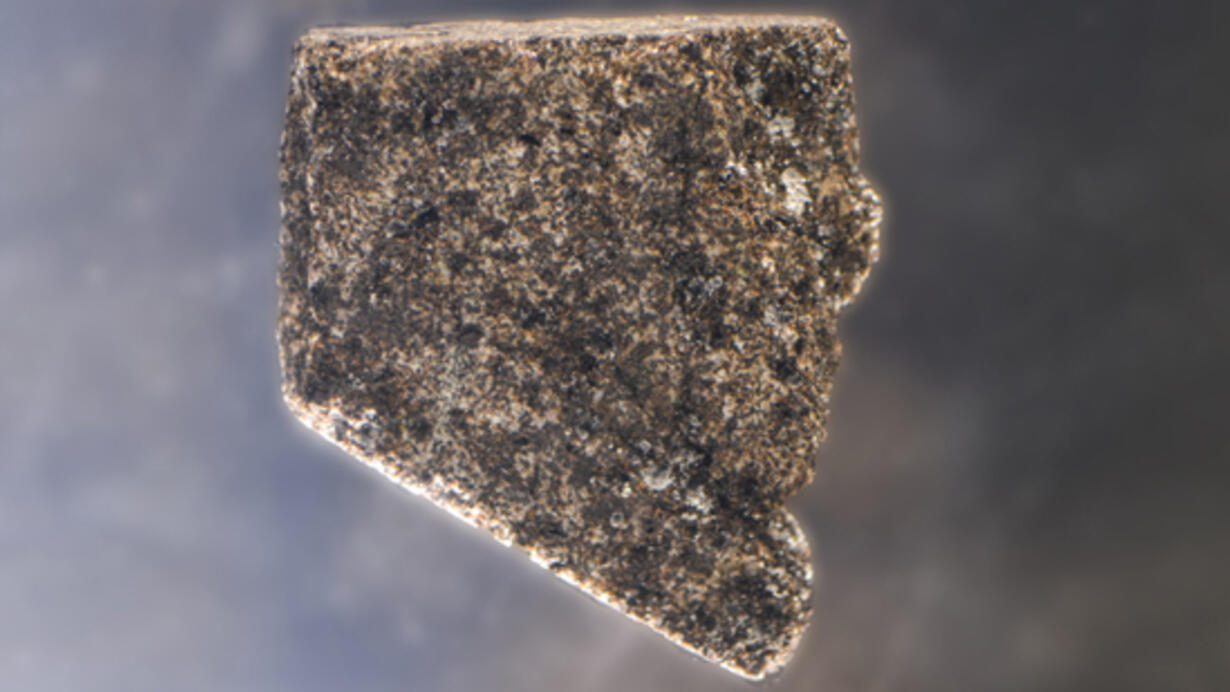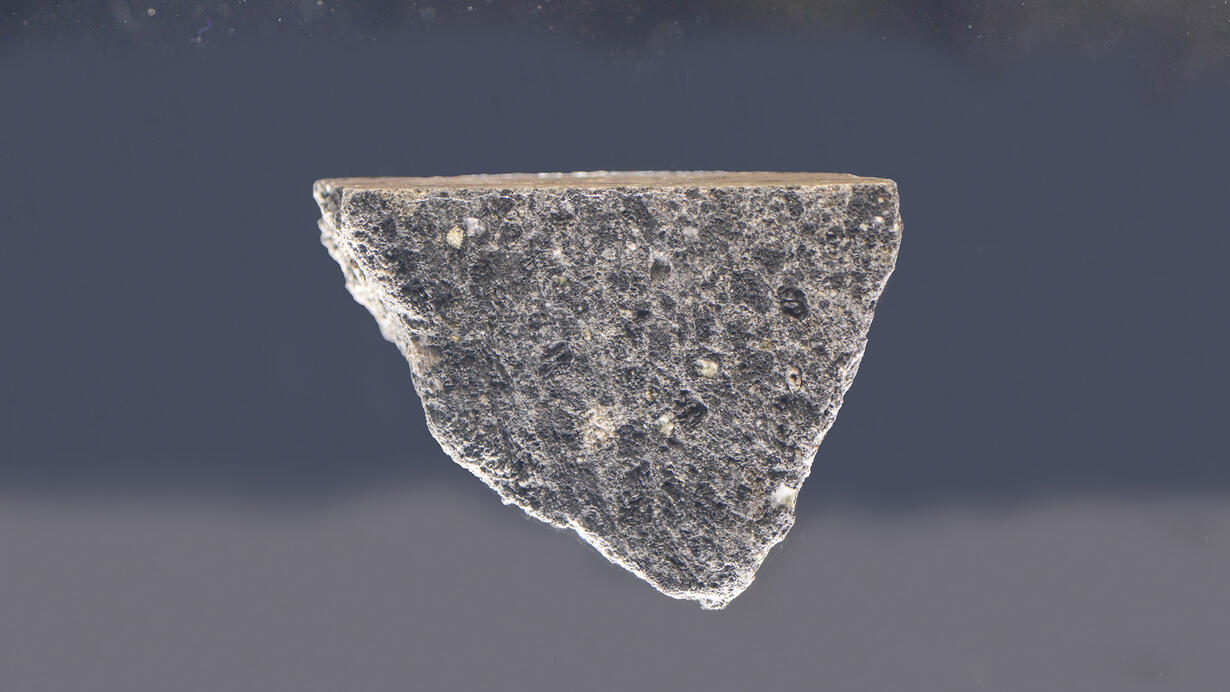On The Moon
Part of Hall of Meteorites.
 C. Chesek/©AMNH
C. Chesek/©AMNH The Moon’s Long Memory
The craters on the Moon are a historical record of asteroid impacts—on Earth as well as the Moon.
For the last three billion years, asteroid impacts have been almost the only event to shape the Moon's surface. Unlike Earth, the Moon has no life, and almost no geologic activity or water. It also lacks an atmosphere, so it has no wind or weather. It also lacks an atmosphere, so it has no wind or weather. The Moon's inactive surface preserves a long history of asteroid impacts. The Moon and Earth are so close together that they share similar histories of asteroid bombardment. But whereas geology and erosion have erased most of Earth's craters, the Moon still shows traces of impacts that are billions of years old.
The Littlest Craters
When an object the size of a sand grain or even smaller hurtles through space and into Earth's atmosphere, friction heats it to more than 1,650˚C (3,000˚F) and we see it as a flash of light—a shooting star; a meteor! But the Moon has no atmosphere to protect it from incoming objects. Even a microscopic speck of dust, or micrometeorite, forms a tiny crater wherever it hits. You can see the effects of these impacts on the surface of the highest moon rock on your right, collected during the Apollo 16 mission.
The Moon's surface is covered with microcraters smaller than a human red blood cell. The steady pelting of the Moon pulverizes the fine-grained layer of powder that covers the Moon's surface. This "impact gardening" of the lunar soil proceeds so slowly that the footprints of the Apollo astronauts will last for at least a million years.
NASA
Impacts Way Back When
To sketch out a rough sequence of events on the Moon, researchers have studied the geology and counted the craters on its surface. When Apollo astronauts brought back lunar samples, scientists used the ages of those rocks to reconstruct the history of asteroid bombardment on the Moon and Earth.
Around 3.9 billion years ago, when Earth and the Moon were relatively young, they were bombarded by more—and bigger—asteroids than at any time since. This cataclysmic period must have made craters on Earth hundreds of miles across. Most scientists agree that this deluge of impacts was the tail end of the Solar System's collision-dominated planet formation period.
Once the barrage let up, Earth and the Moon experienced fewer and fewer impacts over the next three billion years, leading to the relatively peaceful present.
©NASA
The Moon's Long Memory. A Violent Birth
The Moon probably formed in the wake of a titanic collision between Earth and a smaller planet.
How did the Moon form? The leading theory is that the Moon resulted from a collision between the young Earth and Theia, an early planetary body roughly the size of Mars.
Several observations about the Moon confounded early attempts to explain its origin. Most significantly, the Moon is less dense than Earth, because it has a smaller iron core.
The Apollo samples showed that although the Moon has much less iron than Earth, it formed from the same original ingredients, just mixed in different proportions. How did this happen? When Earth and Theia collided, both planets vaporized and formed a giant, fast-spinning cloud of material called a synestia.
Because the Moon's surface is so inactive, it has preserved a long history of asteroid impacts. The Moon and Earth are so close together that the two bodies share roughly the same history of asteroid bombardment. But whereas geology and erosion have erased most of Earth's craters, the Moon still shows traces of impacts that are billions of years old.
Earth's Greatest Hit
The story begins 4.45 billion years ago, when a Mars-sized planet called Theia rammed into Earth. The high-energy impact created a synestia, a superheated, rapidly spinning mass composed of vaporized rock from both planets, billowing outward in a donut-like shape.
At the relatively cool outer limit of the synestia, some vapor condensed into liquid droplets and dust particles that fell inward. This “rain” of silicate materials eventually coalesced into moonlets, or the seeds of potential moons.
It took only about a year for our Moon to grow inside the rapidly cooling synestia. The synestia contracted as it cooled, and in a century or less, the Moon became separated from the shrinking cloud.
Earth absorbed more than its share of Theia’s iron core, leaving the silicate rain of the synestia depleted. This is why the Moon’s iron core is relatively small, while Earth’s core is slightly oversized.
©AMNH
Meet The Moon Rocks
These three moon rocks, unlike all the other samples in this hall, were collected from beyond Earth by human hands, thanks to the astronauts of the Apollo lunar missions.
In This Section
 C. Chesek/©AMNH
C. Chesek/©AMNH Anorthosite Breccia
Look closely at this moon rock to see the dark rim enveloping its lighter gray interior. For millions of years, it was bombarded with solar wind, cosmic rays and other agents of space weathering. These processes changed the minerals on the rock surface into glass, giving it a dark, glassy rim pockmarked with impact craters from micrometeorites no bigger than a grain of sand.
Breccia is rock made of fused rock fragments. Most samples collected on the Apollo 16 mission (1972) are breccias formed during impacts.
Anorthosite is a rock type making up most of the lunar highlands, which formed on the surface of the young Moon’s magma ocean.
ANORTHOSITE BRECCIA
Apollo 16
NASA 60015

C. Chesek/©AMNH
Mare Basalt
Collected from the eastern edge of Mare Serenitatis, this moon rock is mare basalt, or dark lava. It originally melted deep below the Moon's surface, erupted, and then solidified 3.7 billion years ago. Mare basalt from this location contains relatively high concentrations of both iron and titanium.
Astronauts collected this sample during the Apollo 17 mission, in December 1972.
MARE BASALT
Apollo 17
NASA 70035
 C. Chesek/©AMNH
C. Chesek/©AMNH Kreep Basalt
Another type of mare basalt, this moon rock is of a particular type called KREEP. Such rocks are rich in potassium (represented by K in the periodic table of elements), rare earth elements (REE) and phosphorous (P). As the magma ocean solidified, these KREEP components remained in the molten portion, becoming more concentrated. This heavier KREEP magma sank to the lower crust, where it solidified, until it was melted by rising basalt lava.
© NASA
KREEP BASALT
Apollo 14
NASA 60015